
No garden is complete without a set of garden pests. That is if you are growing organically.
There is no possible way to be entirely bug-free. But, why would you want to be anyway?
In general, most insects are great to have rummaging around in your garden, pollinating your flowers and taking care of the bad guys. Those backyard friends are called beneficial insects. You’ll want to attract as many of them as possible.
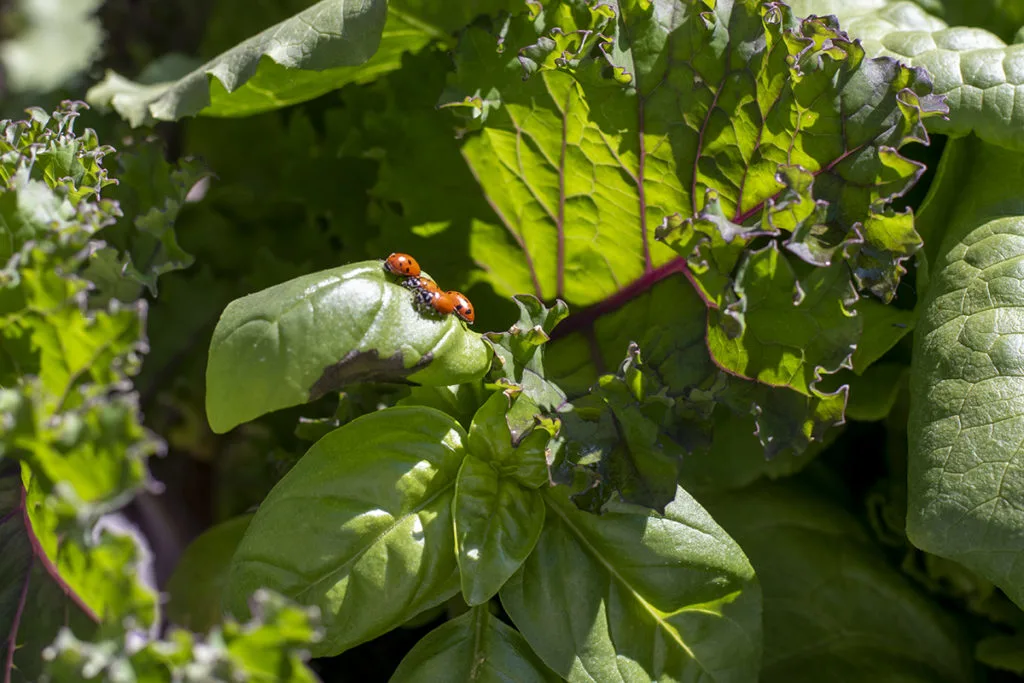
Then you can work on enticing toads and frogs into your garden as well.
Let’s get back to the jumpy topic of flea beetles.
I know they aren’t everyone’s favorite and in some seasons they can be downright annoying. Maybe with a little knowledge and understanding, we can come to terms with why they are in your garden. Perhaps even find out what you can do about their presence.
What Are Flea Beetles?
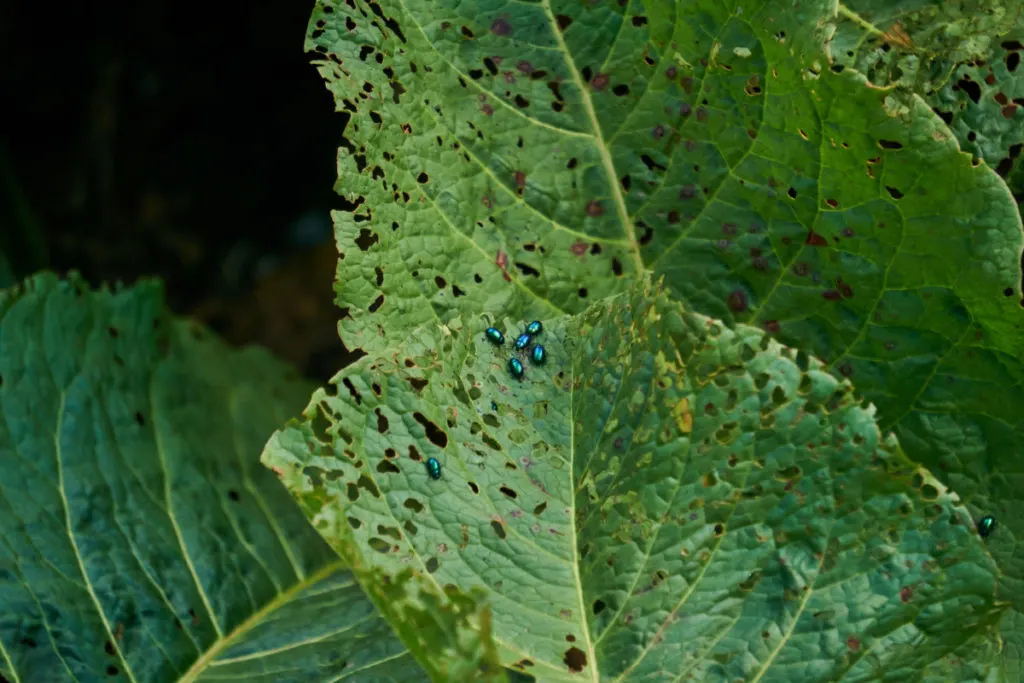
Flea beetles are tiny, shiny jumpy little things that eat thousands of holes in just about everything you might want to plant in your garden. Unfortunately, they have an enormous appetite for seedlings. So, getting your garden started may be a problem if their numbers are large.
Maybe you’ve seen their damage, but lost sight of them as they hopped away and hid in the mulch or under protective leaves of another plant.
Or you’ve spotted them and felt that growing sense of helplessness as your garden is attacked from all leaves at once.
I know. We’ve been there, more than once. It seems they are difficult to dissuade from nibbling your garden crops.
What Do Flea Beetles Look Like?
The flea beetles currently residing in our garden are shiny and tan colored, with a couple of stripes as decoration.
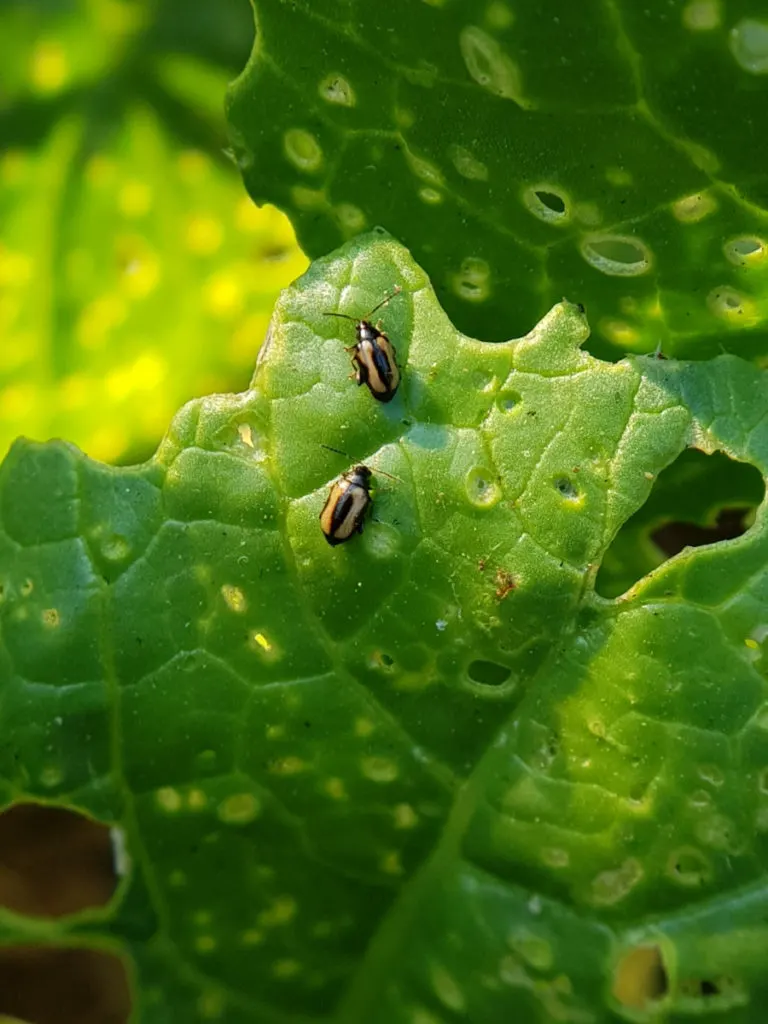
But there are so many different species, that your garden pests may look slightly different. Flea beetles can be black, bronze, bluish or tan, with random colors mixed in. Their hard shells are usually shiny with stripes or spots, or a solid back.
Flea beetles also jump, like fleas, when danger comes near. Their large back legs come in handy for this feat. That’s one way you might notice them.
But at 1/16 of an inch, they will easily escape your sight.
Rather than trying to track the flea beetles down and identify them, you might want to examine your crops more closely first. There will always be tell-tale signs of flea beetle damage.
What Does Flea Beetle Damage Look Like?
Holes. Lots and lots of tiny holes, like birdshot scars from a shotgun shell.
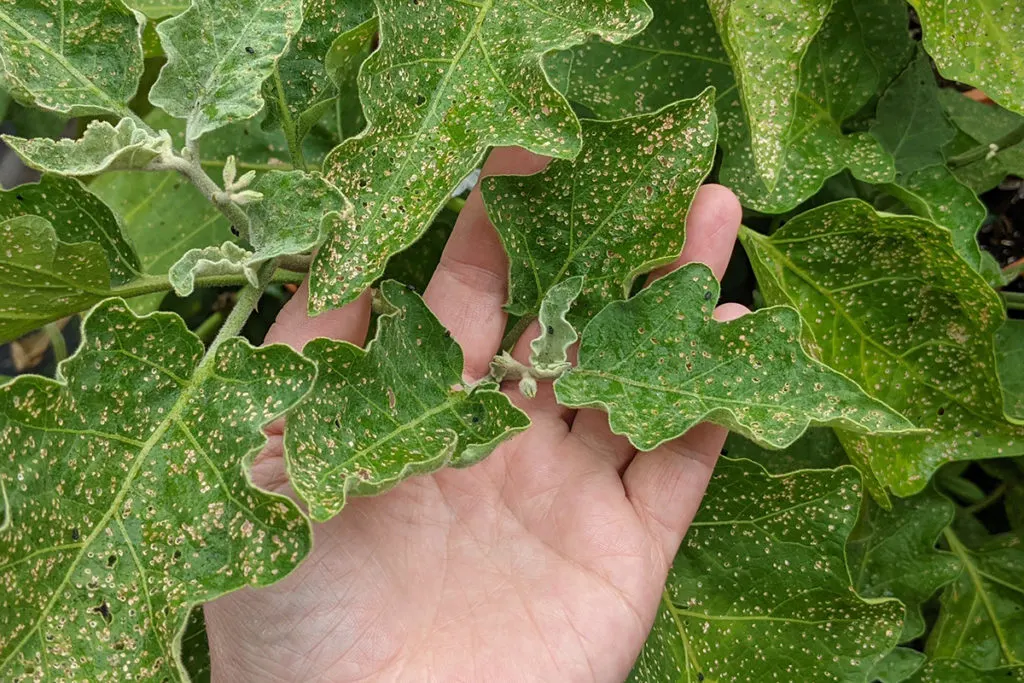
It’s the adults that cause the most damage to your crops as they feed on both leaves and stems. The larvae are generally harmless.
It’s important to know, that plants started from seed are more likely to suffer damage, than those which are transplanted. If you notice they are becoming a problem, try and outgrow them by transplanting as many plants as you can into your garden.
However, if conditions are right, they will attack plants grown from seeds and transplants alike.
It’s always helpful to understand the life cycle of an insect, to know best how to get rid of it. That comes a bit later, let’s first find out what they like for breakfast, lunch and dinner.
Crops That Flea Beetles Like Best
Flea beetles are known to feast on young vegetable crops, including:
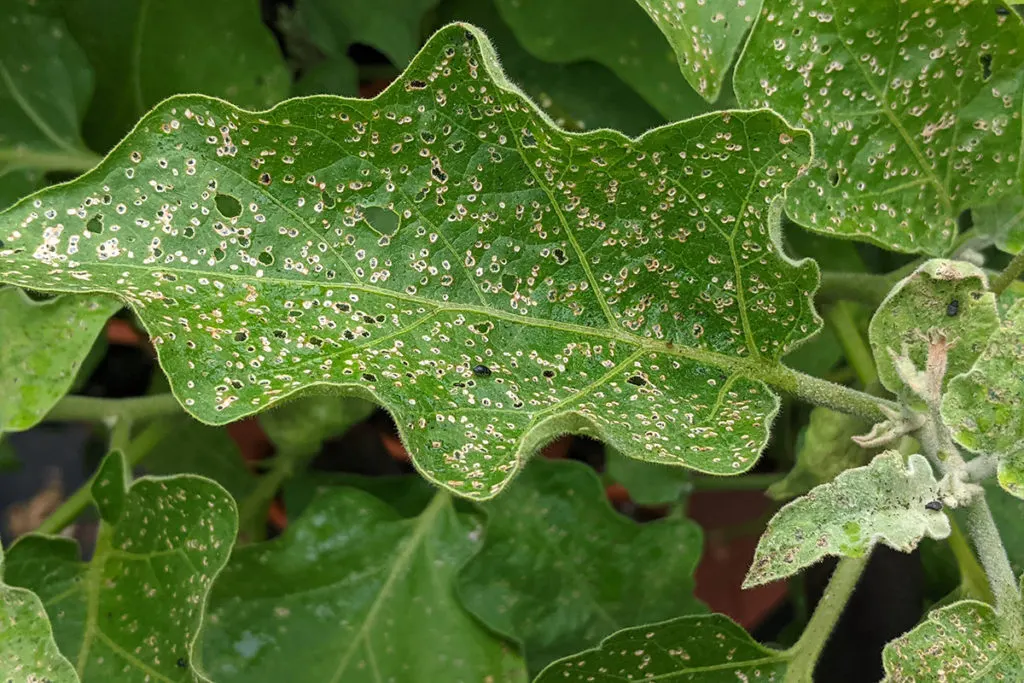
- broccoli
- Brussels sprouts
- cabbage
- eggplant
- horseradish
- kale
- rocket
- melons
- peppers
- radishes
- spinach
- tomatoes
- turnips
But you may also find them on regular garden weeds, lettuce, sunflowers, squash, corn and beans. It all depends on the devouring species of which there are many.
There are crucifer leaf beetles (Phyllotreta cruciferae), spinach leaf beetles (Disonycha xanthomelas) and striped flea beetles (Phyllotreta striolata) which feed on more specific plants.
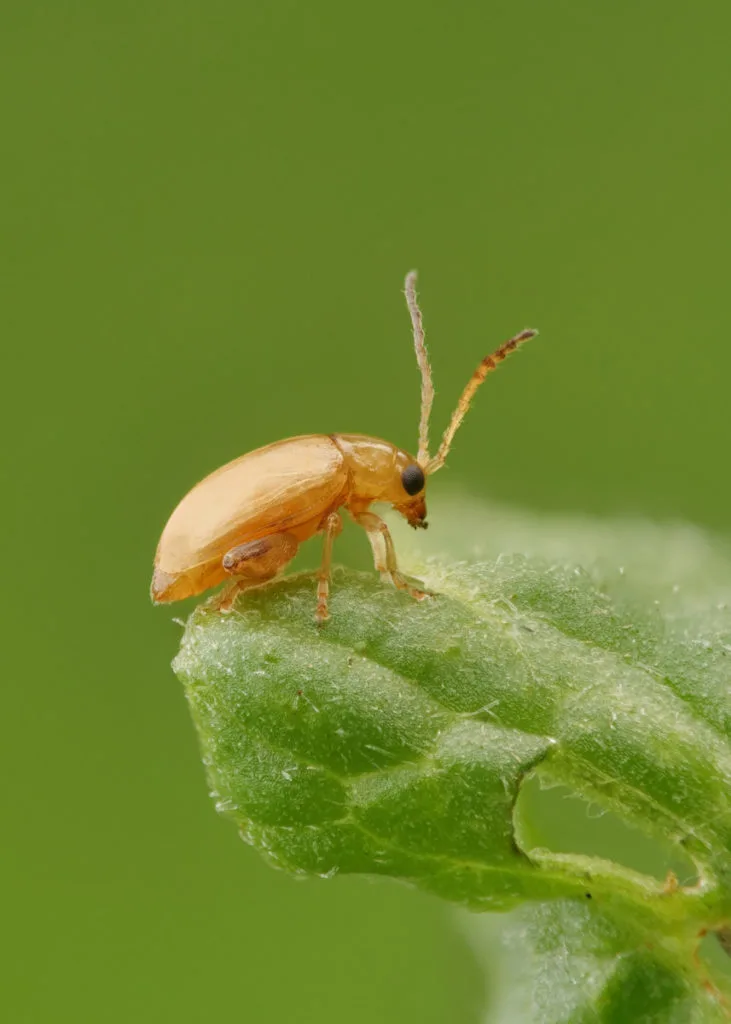
If you are dealing with the palestriped flea beetle (Systena blanda), just about every young plant is at risk. They’ll even take a few bites out of mint, though I’ve never seen them on our calendula or chives.
Life Cycle of Flea Beetles
Flea beetles survive the winter as adults, hiding in mulch, leaf litter, wooded areas and hedgerows. Yet, you need some of those wild places in order to cater to other creatures.
Don’t get carried away and try to remove all ground cover. Take it easy and know what you need to do in spring when the flea beetles become active once again.
Different species have different breeding habits.
Female flea beetles will lay single eggs, or clusters of eggs in holes in the ground, roots or leaves of other garden vegetables. A good reminder as to why it’s so important to clean up your garden at the end of each season.
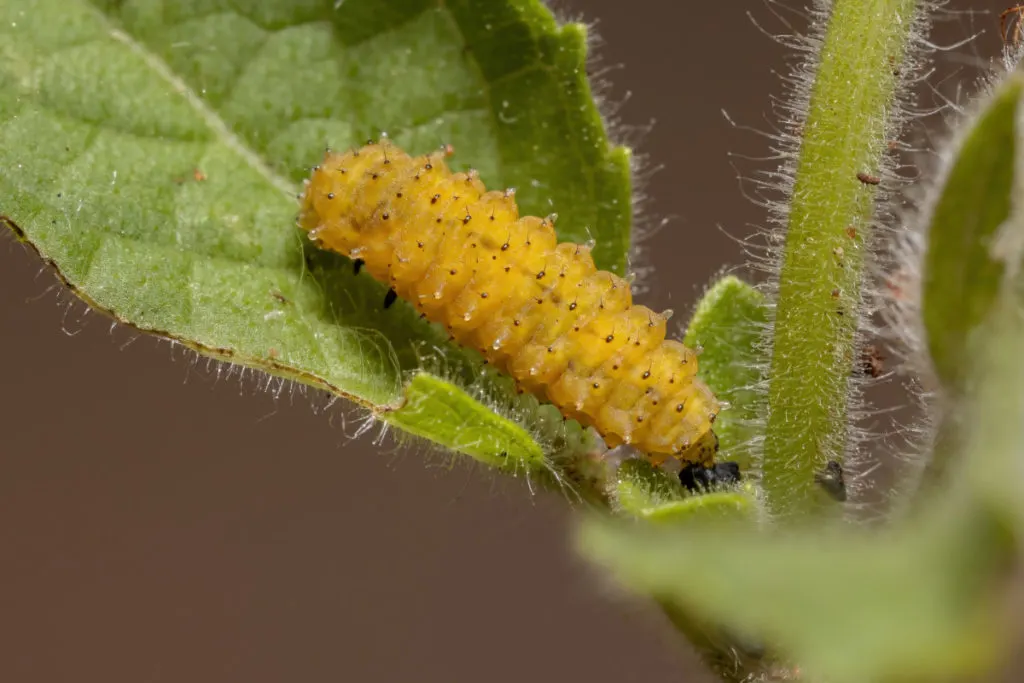
Then, small white/yellow larvae hatch from the eggs, feeding right where they were laid. The larvae transform into pupae and the cycle begins again, to the tune of one or two generations a year.
How to Protect Your Plants
If you have flea beetles in your garden, you’ll quickly find out that they are most active in early spring.
As soon as you see their activity, you too must spring into action.
Luckily, there are a few things you can do to decrease their numbers:
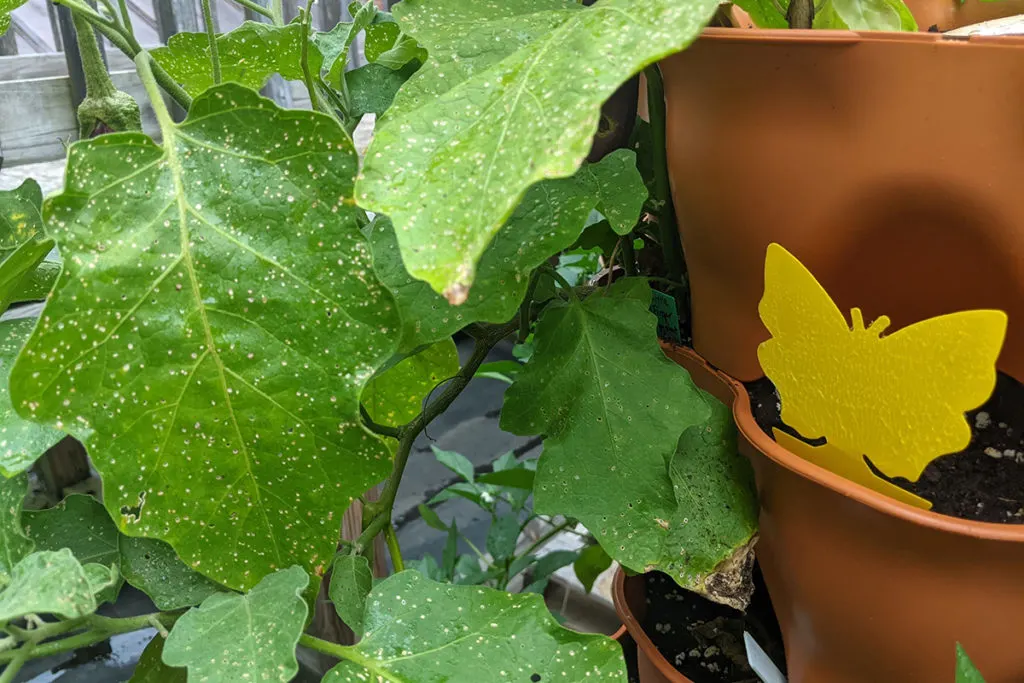
- spread diatomaceous earth around plants where beetles are present
- use sticky traps to get rid of adult beetles
- manually remove weeds around the garden to limit food sources for the flea beetles
- spray a mixture of neem oil and water on all affected plant surfaces
- dust plants with talc or fine clay to repel flea beetles
In short, there is no best way to get rid of them. Yet, there are several ways to make an attempt.
Chemical controls, such as insecticidal dusts, should only be used as a very last resort. It is far better to wait it out and try out some preventive measures for next season, rather than damage your precious garden soil.
How To Prevent Flea Beetles
Prevention is always the best cure.
In the case of dealing with flea beetles, prevention is far easier than killing them off.
To prevent flea beetle numbers from rising:
- plant your crops as late as possible, as they will grow faster in warmer weather
- remove old mulch and compost it to get rid of overwintering adults
- cultivate the soil to expose hidden flea beetles
- use row covers in season to keep flea beetles off the young seedlings
- sow nasturtiums and radishes as trap crops before planting other vegetables, as flea beetles will be attracted to them
- plant aromatic herbs such as basil and catnip to repel beetles
- attract beneficial insects, such as braconid wasps which will kill the adult beetles
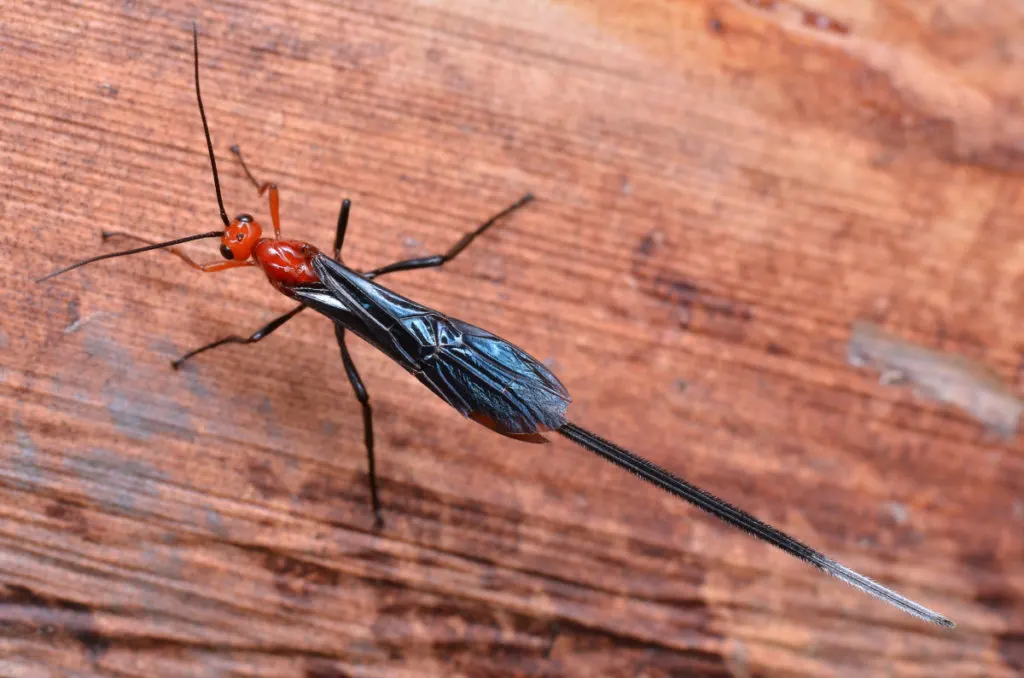
It’s no easy feat to evict them once they’ve moved in, though all of the preventative measures are definitely worth a try.
At some point, you’ll also want to introduce crop rotation and companion planting into your garden, for the overall health and vitality of your crops.
Whatever you do, don’t let the flea beetles slow you down. As soon as your crops have taken off, there is nothing they can do to harm them. With a little bit of love and care, your garden will outgrow them every time.
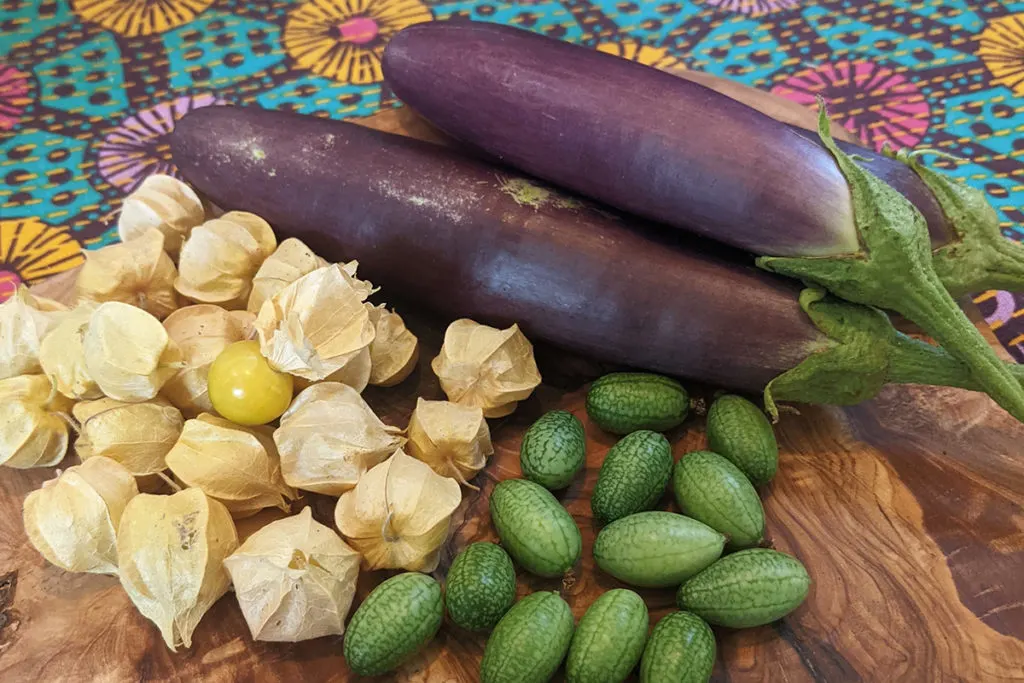

Get the famous Rural Sprout newsletter delivered to your inbox.
Including Sunday musings from our editor, Tracey, as well as “What’s Up Wednesday” our roundup of what’s in season and new article updates and alerts.

